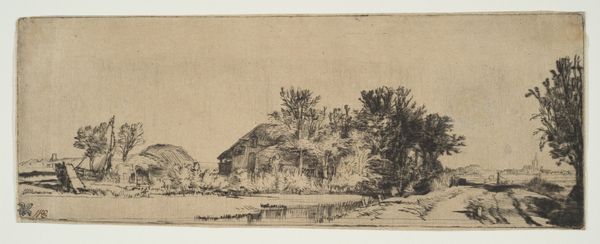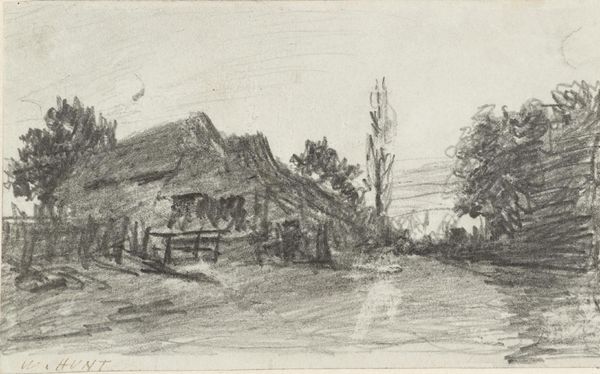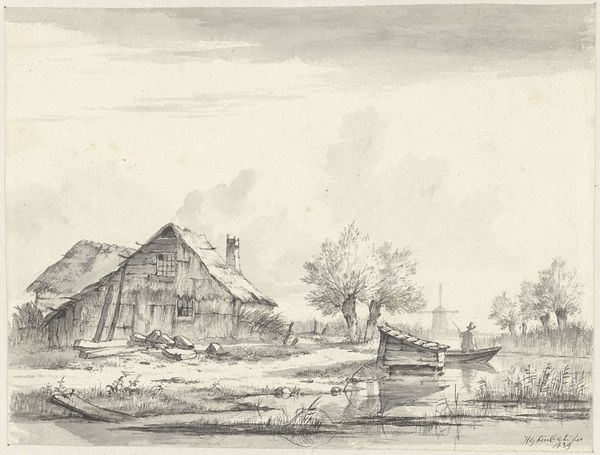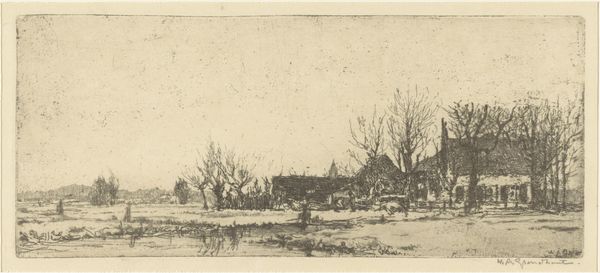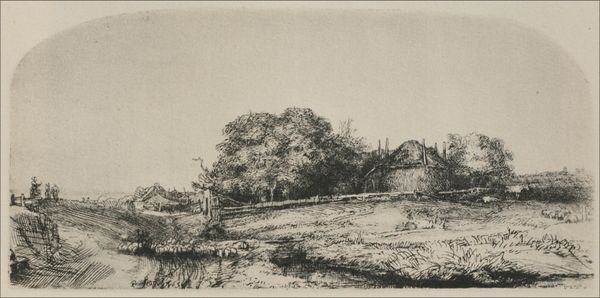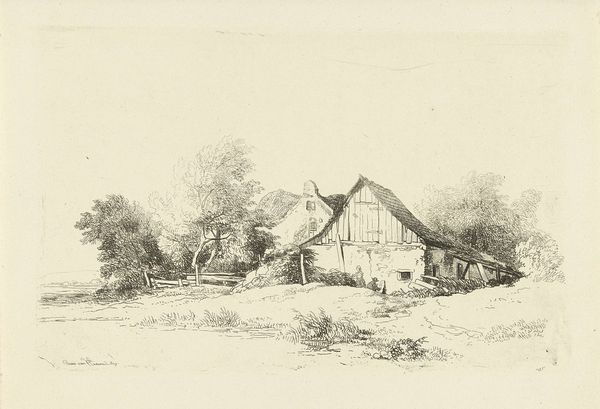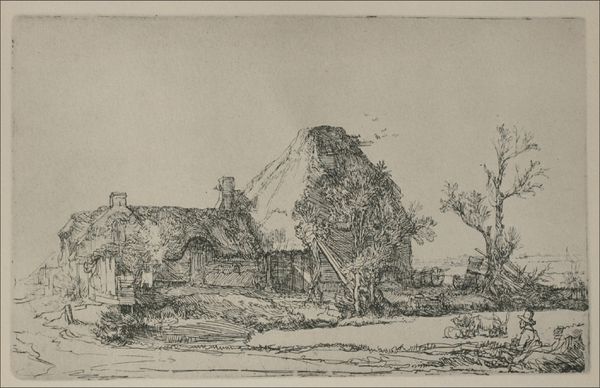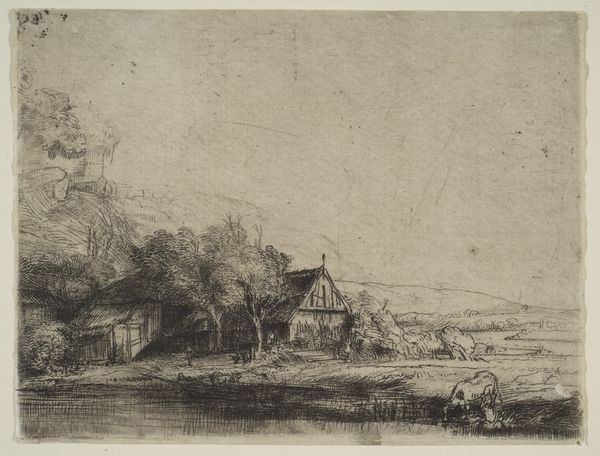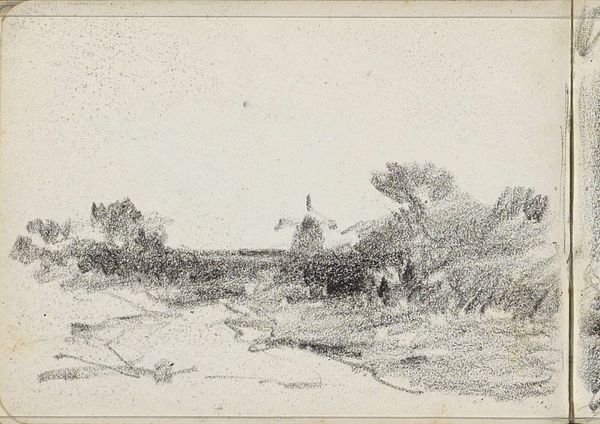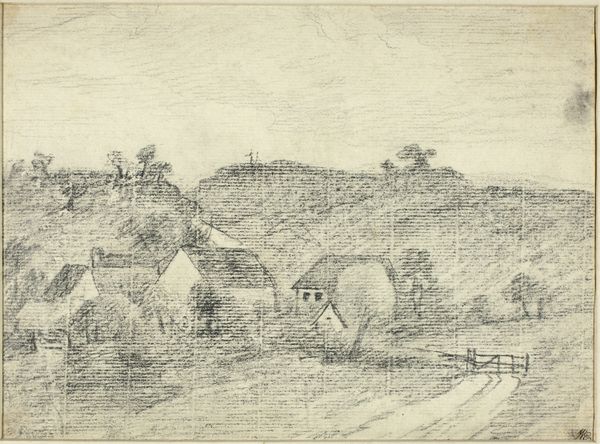
drawing, print, etching
#
tree
#
drawing
#
baroque
#
dutch-golden-age
# print
#
etching
#
landscape
#
line
#
realism
Dimensions: 8 x 21 cm
Copyright: Public domain
Curator: This etching, "A Landscape of Irregular Form," was created by Rembrandt van Rijn in 1652. It showcases his masterful technique in printmaking. Editor: My immediate impression is one of peaceful melancholy. The low horizon line and the seemingly arbitrary collection of natural elements really evoke a somber mood. Curator: It's interesting that you pick up on that emotional complexity. During the Dutch Golden Age, landscapes moved beyond mere backgrounds to become carriers of meaning, reflecting the social and economic prosperity and simultaneously referencing mortality. Editor: Exactly! Notice the dynamism achieved through the contrasting textures. The meticulous lines describing the foliage against the empty expanse of the sky; and the pond and the subtle reflections versus the building and the path which both seem to converge and lose the focus into their environment. Curator: This technique also aligns with the artistic shift occurring then. Realism was prized, but it also reflects the growing sense of national identity in the Dutch Republic, especially as we began to construct our own museums and construct what "art" even means! Editor: The composition leads my eyes towards the horizon, this horizon both is inviting me, a sense of possibility. The formal restraint also enhances the rustic simplicity in what would become an industrial society later on. Curator: And remember, etching as a printmaking technique allowed for wider distribution. Landscapes became accessible to a broader audience, contributing to that formation of shared cultural experiences. Rembrandt wasn't just depicting a place; he was disseminating an idea. Editor: This reminds me about the temporality embedded in art. Even seemingly "natural" images such as landscapes are inherently cultural statements that influence how the contemporary eye perceive nature. Curator: It really underscores art's role in creating collective memory, doesn’t it? We are not just viewing an image; we're participating in a continuing cultural conversation. Editor: Absolutely, and by investigating the formal structure alongside those sociohistorical contexts, we find many, more perspectives to enrich our experience!
Comments
No comments
Be the first to comment and join the conversation on the ultimate creative platform.

